BlueVitality Methylene blue 1%
Discover premium quality methylene blue!
Made in Germany and subjected to independent laboratory testing.
Don't compromise!
Discover premium quality methylene blue!
Developed and manufactured in Germany.
Independently laboratory tested
According to DIN EN 15763, BlueVitality is analyzed by an independent laboratory. The analysis confirms that there is no heavy metal contamination.
Premium quality
BlueVitality contains only high-purity methylene blue and purified water.
For easy dosing, BlueVitality is delivered in a high-quality, light-protected glass bottle with a dropper.
Made in Germany
Adhering to strict regulations, our 1% methylene blue solution is manufactured in Germany.
Frequently Asked Questions
Methylene blue is a synthetic compound used as a dye and medication. Chemically, it belongs to the group of thiazine dyes and finds applications in various fields including medicine, biology, and chemistry. In medicine, it is commonly used to treat methemoglobinemia, a condition where the blood cannot transport oxygen adequately. Additionally, it serves as an antiseptic and diagnostic agent. In microscopy, it is used as a stain to visualize structures in cells and tissues.
Methylene blue was first synthesized in 1876 by the German chemist Heinrich Caro and quickly found applications in medicine and microscopy. In the early 20th century, methylene blue was used as one of the first synthetic drugs to treat malaria. Since then, it has established itself in various medical and scientific fields.
Important note: Methylene blue is not approved as a food or dietary supplement in Germany and the European Union according to the EU Novel Food Regulation and must not be ingested!
The application depends on the specific intended use:
Medical Application: It can be administered intravenously, orally, or topically. Intravenously, it is commonly used to treat methemoglobinemia, while orally it can be used for certain urinary tract infections. In low concentrations, it is sometimes applied topically as an antiseptic.
Diagnostic Purposes: In diagnostics, it is used to stain tissues and cells for visibility under the microscope. This aids in identifying and examining cell structures and anomalies.
Aquaristics: In aquaristics, it is used as a treatment against fungal infections and parasitic diseases in fish. It is added to the water in specific concentrations.
Laboratory Applications: In microscopy and biology, it is used as a stain to highlight cell and tissue structures for examination under the microscope.
Important note: Methylene blue is not approved as a food or dietary supplement in Germany and the European Union according to the EU Novel Food Regulation and must not be ingested!
Methylene blue is generally safe when used correctly and according to instructions. It has been used in medicine and other fields for over a century. However, there are some important points to consider:
Medical use: When used correctly and under medical supervision, methylene blue is safe. It is used for the treatment of methemoglobinemia, certain urinary tract infections, and other medical conditions. Medical supervision is important to avoid potential side effects and interactions with other medications.
Diagnostic and laboratory applications: In microscopy and biology, methylene blue is used in low concentrations as a staining agent and is safe for these applications.
Aquaristics: When properly dosed, methylene blue is safe and effective for treating fish diseases in aquaristics.
However, there are some contraindications and risk groups:
G6PD Deficiency: Individuals with glucose-6-phosphate dehydrogenase deficiency should avoid methylene blue, as it can trigger hemolysis in these individuals.
Pregnancy and Breastfeeding: The safety during pregnancy and breastfeeding has not been adequately studied. Pregnant and breastfeeding women should use it only after consulting with a doctor.
Keep out of reach of children!
Interactions: It can interact with certain medications, including antidepressants, and increase the risk of serotonin syndrome. It is important to inform your doctor about all medications you are taking.
In summary, methylene blue is safe when used properly, but like any medication, it is important to follow the instructions carefully and consider possible contraindications. When in doubt, consulting a doctor or specialist is advisable.
Methylene blue can be available in various forms and purities depending on its intended use.
The main differences include:
Purity Grades: There are different purity grades suitable for various applications. Medical-grade purity is required for therapeutic uses, while technical or chemical purity is sufficient for industrial and scientific applications. It is important to prioritize pharmaceutical-grade quality, which is additionally certified by an independent laboratory certificate.
USP Quality (United States Pharmacopeia): This purity is approved for medical applications and meets rigorous quality and purity standards.
Laboratory Quality: This purity is used for scientific research and laboratory applications.
Technical Quality: This is intended for industrial applications and has lower purity requirements.
According to the literature, methylene blue is an extremely stable chemical compound and can be practically indefinitely shelf-stable when stored in a cool, dry, and light-protected environment.
Important note: Methylene blue is not approved as a food or dietary supplement in Germany and the European Union according to the EU Novel Food Regulation and must not be ingested!
A 1% methylene blue solution contains approximately 0.5mg of methylene blue per drop. According to the literature, this solution is further diluted in water (e.g., in 250ml of water).
Dosage:
1. Week: 10mg per day
2. Week: 20mg per day
3. Week: 30mg per day
In clinical studies, doses of up to 2mg/kg are administered (e.g., for an 80kg individual, 160mg of methylene blue = 320 drops of 1% methylene blue solution).
Customer reviews










Free e-book
Studies on methylene blue
Methylene blue (MB) is a well-established drug with a long history of use, appreciated for its diverse applications and minimal side effect profile. Traditionally, MB has been used to treat malaria, methemoglobinemia, carbon monoxide poisoning, and as a histological stain. However, its role in mitochondria has recently garnered significant interest. MB can directly shuttle electrons from NADH to cytochrome c in the mitochondrial electron transport chain, enhancing complex IV activity and promoting mitochondrial function while reducing oxidative stress. Besides its mitochondrial protective effect, MB is also known to mitigate neuroinflammatory processes. Mitochondrial dysfunction has been identified as a common pathological phenomenon in a variety of neurodegenerative diseases, making MB a promising therapeutic agent.
In vitro and in vivo studies have shown impressive efficacy of MB in mitigating neurodegeneration and associated behavioral phenotypes in animal models of diseases such as stroke, global cerebral ischemia, Alzheimer's disease, Parkinson's disease, and traumatic brain injury. This review summarizes current work establishing MB as a promising candidate for neuroprotection, with a focus on the contribution of mitochondrial function to neuronal health. Additionally, this study briefly examines the link between MB, neurogenesis, and improved cognition in the context of age-related cognitive decline.
Source: From Mitochondrial Function to Neuroprotection-an Emerging Role for Methylene Blue
Methylene blue (MB) is the first fully synthetic compound introduced over 120 years ago as a treatment for malaria in medicine. MB is approved for the treatment of methemoglobinemia but also shows promising results as a neuroprotective agent in models of Alzheimer's, Parkinson's, and Huntington's diseases, traumatic brain injury, amyotrophic lateral sclerosis, and depressive disorders. However, the aim of this study is not only to highlight the therapeutic effects of MB in treating various neurodegenerative diseases, but also to investigate the mechanisms of its direct or indirect influence on signaling pathways.
MB can act as an alternative electron carrier in the mitochondrial respiratory chain when the electron transport chain is dysfunctional. It also exhibits anti-inflammatory and anti-apoptotic effects, inhibits monoamine oxidase (MAO) and nitric oxide synthase (NOS), activates pathways involved in mitochondrial pool renewal (mitochondrial biogenesis and autophagy), and prevents aggregation of misfolded proteins. A comprehensive understanding of all aspects of MB's direct and indirect influences, not just some of its effects, can advance further research on this compound, including its clinical applications.
Source: Molecular Mechanisms of the Neuroprotective Effect of Methylene Blue
Methylene blue (MB) is appreciated for its diverse medical applications and is well suited for the treatment of methemoglobinemia and ifosfamide-induced encephalopathy. In recent years, interest in MB has intensified as an antimalarial agent and potential treatment option for neurodegenerative diseases such as Alzheimer's disease. Reports indicate an antidepressant and anxiolytic potential of MB in preclinical models, as well as promising results from clinical studies in schizophrenia and bipolar disorders.
MB is a known inhibitor of monoamine oxidase A (MAO-A), which is an established target for antidepressant effects. Additionally, MB non-selectively inhibits nitric oxide synthase (NOS) and guanylate cyclase. Dysfunction of the nitric oxide (NO)-cyclic guanosine monophosphate (cGMP) signaling pathway is closely associated with the neurobiology of mood, anxiety, and psychotic disorders, while inhibition of NOS and/or guanylate cyclase is associated with antidepressant effects. These effects could significantly contribute to the psychotropic activity of MB.
Furthermore, these disorders are characterized by mitochondrial dysfunction and redox imbalance. By acting as an alternative electron acceptor/donor, MB restores mitochondrial function, enhances neuronal energy production, and inhibits the formation of superoxide, which could also contribute to its therapeutic activity.
The application of MB in depression combined with neurodegenerative diseases such as Alzheimer's and Parkinson's represents a particularly relevant strategy. Considering its physicochemical and pharmacokinetic properties, MB analogues could offer therapeutic potential as novel multi-target strategies in the treatment of depression. Moreover, analogues with low MAO-A activity may provide equivalent or improved efficacy with a lower risk of side effects.
Source: Methylene blue and its analogues as antidepressant compounds
Oxidative stress is the main cause of skin aging, encompassing wrinkles, pigmentation, and weakened wound healing capability. The use of antioxidants in skincare is recognized as an effective method to delay the skin aging process. Methylene blue (MB), a traditional antioxidant targeting mitochondria, has demonstrated potent effects in eliminating reactive oxygen species (ROS) in cultured human skin fibroblasts derived from healthy donors and patients with progeria, a genetic premature aging disease.
Compared to other commonly used antioxidants, both general and mitochondria-targeted, MB was found to more effectively stimulate the proliferation of skin fibroblasts and delay cellular senescence. A skin irritation test on an in vitro reconstructed 3D model of human skin demonstrated that MB is safe for long-term use even at high concentrations and does not cause irritation.
Application of MB on this 3D skin model also showed that MB enhances skin viability, promotes wound healing, increases skin moisture, and thickens the dermis. Gene expression analysis revealed that MB treatment altered the expression of several extracellular matrix proteins in the skin, including upregulation of elastin and collagen 2A1, two essential components for healthy skin.
MB can bypass the activity of complex I/III in the mitochondria and mitigate oxidative stress to some extent. This overview summarizes the latest studies on the applications of MB in treating age-related conditions, including neurodegeneration, memory loss, skin aging, and the premature aging disease progeria.
Source 1: Anti-Aging Potentials of Methylene Blue for Human Skin Longevity
Source 2: The Potentials of Methylene Blue as an Anti-Aging Drug
In this randomized, controlled acute intervention study, the influence of methylene blue (MB) on endotoxic shock was investigated. Anesthetized, healthy dogs received endotoxin alone or in combination with increasing doses of MB. The study found that low and moderate doses of MB significantly increased arterial blood pressure but had no effect on cardiac index. MB dose-dependently increased systemic and pulmonary arterial pressures as well as vascular resistances. However, at higher doses, MB worsened systemic hypotension, myocardial depression, and pulmonary hypertension. Interestingly, MB selectively increased blood flow in mesenteric and femoral arteries while renal blood flow remained unaffected. The study suggests that MB has complex dose-dependent effects on hemodynamic parameters and regional blood flow during endotoxic shock, potentially influencing its application in intensive care settings.
Methylene blue (MB) and its derivatives are being investigated for their potential in treating Alzheimer's disease (AD), a prevalent neuropathological disorder characterized by gradual cognitive decline and the onset of severe dementia. The prevalence of AD is expected to rise significantly due to aging populations. Histopathologically, AD is marked by the presence of intracellular neurofibrillary tangles (NFTs) and extracellular amyloid plaques in the brain. Methylene blue, a thiophenazine dye with FDA approval for treating multiple diseases, demonstrates facile crossing of the blood-brain barrier and potential therapeutic efficacy in disorders of the central nervous system, thereby increasing interest in its application for AD treatment. The literature review encompasses randomized clinical trials investigating the potential benefits of MB in AD treatment. Study results indicate that MB administration has shown improvements in cognitive function, reductions in beta-amyloid plaque accumulation, enhancements in memory and cognitive function in animals, and antioxidative properties capable of mitigating oxidative stress and inflammation in the brain. This overview evaluates the latest research on MB application for treating AD.
Die Beziehung zwischen Methylenblau und der Alzheimer-Krankheit hat in letzter Zeit zunehmend wissenschaftliche Aufmerksamkeit auf sich gezogen, da vermutet wird, dass MB das Fortschreiten dieser Krankheit verlangsamen könnte. Tatsächlich beeinflusst MB neben seinen gut charakterisierten hemmenden Wirkungen auf den cGMP-Signalweg zahlreiche zelluläre und molekulare Ereignisse, die eng mit dem Fortschreiten von AD verbunden sind. Aktuelle Studien zeigen, dass MB die Bildung von Amyloidplaques und Neurofibrillentangles verringern und teilweise Beeinträchtigungen der mitochondrialen Funktion und des zellulären Stoffwechsels reparieren kann. Darüber hinaus beeinflusst MB verschiedene Neurotransmittersysteme (cholinerg, serotonerg und glutamaterg), die eine wichtige Rolle bei der Pathogenese von AD und anderen kognitiven Störungen spielen. Die Kombination der verschiedenen Wirkungen von MB auf diese zellulären Funktionen könnte potenziell positive Effekte von MB vermitteln. Dies hat zu Versuchen geführt, neuartige Behandlungsmodalitäten auf Basis von MB für AD zu entwickeln. In diesem Übersichtsartikel werden die Wirkungen von MB auf Neurotransmittersysteme sowie auf mehrere zelluläre und molekulare Ziele zusammengefasst und ihre Relevanz für AD diskutiert.
Quelle 1: Exploring Methylene Blue and Its Derivatives in Alzheimer’s Treatment: A Comprehensive Review of Randomized Control Trials
Quelle 2: Methylene blue and Alzheimer’s disease
